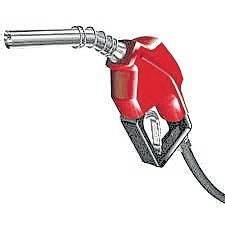
CINCINNATI – At $2.46, the national gas price average is more expensive on the week (+4 cents), the month (+16 cents) and the year (+2 cents). This past Saturday, Feb. 6, was the first time in 340 days the national average was more expensive than a year ago.
Today, nearly two-thirds of all state gas price averages are more expensive year-over-year. Pump prices continue to climb, in part due to expensive crude oil and the market’s growing optimism that demand will increase amid the vaccination roll-out.
Up to $56/bbl, crude oil increased last week following Organization of the Petroleum Exporting Countries’ (OPEC) decision to keep their production cuts unchanged—a decision influenced by the ongoing impact of the pandemic on gasoline demand. Crude has not been priced this high since January 2020.
Typically, it can take a few weeks before pump prices see the impact of more expensive crude, and with crude accounting for more than 50% of the retail price, increases are no doubt going to continue.
“Consumers can expect to continue paying more to fill up this month, potentially up to 10 cents more a gallon, depending on how high crude goes,” said Jenifer Moore, AAA spokesperson. “If demand grows, that will further fuel pump price increases.”
Locally, drivers in Ohio, Indiana and Kentucky are paying an average of six cents more at the pump compared to this time last year.
Quick stats
• The nation’s top 10 largest weekly increases: Florida (+11 cents), Michigan (+11 cents), West Virginia (+10 cents), Missouri (+6 cents), Wisconsin (+6 cents), Pennsylvania (+6 cents), Connecticut (+6 cents), Kentucky (+6 cents), Illinois (+5 cents) and Louisiana (+5 cents).
• The nation’s top 10 least expensive markets: Mississippi ($2.14), Texas ($2.16), Oklahoma ($2.18), Missouri ($2.19), Louisiana ($2.20), Arkansas ($2.21), South Carolina ($2.22), Kansas ($2.23) and Tennessee ($2.23).
Oil market dynamics
At the close of Friday’s formal trading session, WTI increased by 62 cents to settle at $56.85. Crude prices rose last week after OPEC and its production reduction agreement partners met to review compliance with their agreement to collectively reduce crude production by 7.2 million b/d.
The group decided to hold the cuts steady and expects output to remain low this year since demand is forecasted to be lower than expected in 2021, due to ongoing crude demand concerns as the pandemic continues.
Crude prices were also bolstered by the Energy Information Administration’s (EIA) latest report showing that total domestic crude inventories dropped by 1 million bbl to 475.7 million bbl.


